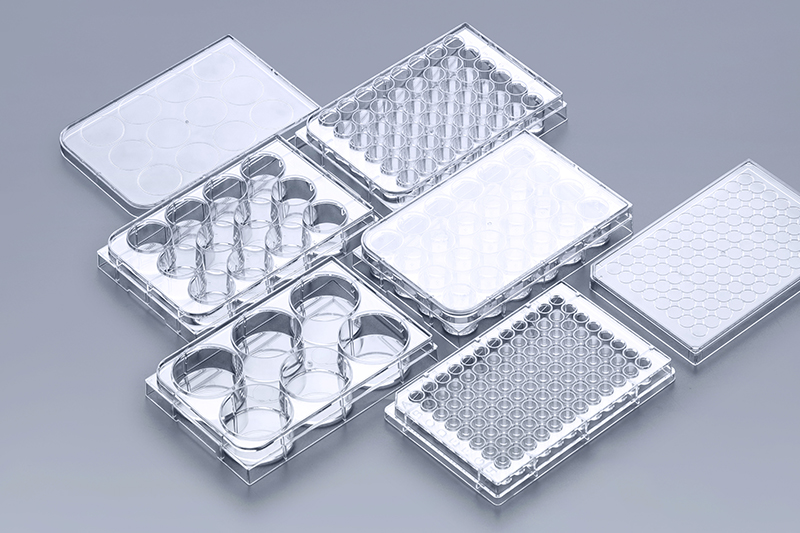Cell culture plates are a kind of consumable with porous structure. The common ones are 4-well, 6-well, 24-well, 48-well, 96-well, etc. It is mainly used for exploring and optimizing the initial experimental conditions in cell and culture.
Cell culture experiment is a very rigorous work, which requires very high performance of consumables. For cell culture plates, it is mainly reflected in the following two aspects:
1. Adherence ability: This is a necessary condition for the growth of adherent cells. Different from the growth of suspension cells in the culture medium, the growth of adherent cells must have a support surface that can be attached. The cells rely on their own secretion or in the culture medium. The provided attachment factors can grow and reproduce on the surface. Cell culture plates generally use polystyrene raw materials, which are hydrophobic in nature. In order to adapt to the growth of adherent cells, they will undergo special surface modification. Some customers who have higher requirements on the wall-attachment performance will add a layer of coating liquid on the basis of the wall-attachment treatment to enhance the wall-attachment performance.
2. Batch-to-batch consistency: refers to whether the performance and quality of the cell culture plate batches are consistent, which helps to reduce the batch-to-batch variability during cell culture and ensure the accuracy of the experimental process. This feature mainly examines the production process and quality control of the manufacturer. Doing these two points well is the basis for ensuring the consistency between batches of consumables.
The above are two important characteristics of cell culture plates, and they are also two aspects that many scientific research institutions, pharmaceutical companies, and testing institutions are more concerned about.
The FAI climbed 5.9 percent year-on-year in the first 11 months of 2018, quickening from the 5.7-percent growth in Jan-Oct, the National Bureau of Statistics (NBS) said Friday in an online statement.
The key indicator of investment, dubbed a major growth driver, hit the bottom in August and has since started to rebound steadily.
In the face of emerging economic challenges home and abroad, China has stepped up efforts to stabilize investment, in particular rolling out measures to motivate private investors and channel funds into infrastructure.
Friday's data showed private investment, accounting for more than 60 percent of the total FAI, expanded by a brisk 8.7 percent.
NBS spokesperson Mao Shengyong said funds into weak economic links registered rapid increases as investment in environmental protection and agriculture jumped 42 percent and 12.5 percent respectively, much faster than the average.
In breakdown, investment in high-tech and equipment manufacturing remained vigorous with 16.1-percent and 11.6-percent increases respectively in the first 11 months. Infrastructure investment gained 3.7 percent, staying flat. Investment in property development rose 9.7 percent, also unchanged.
 English
English



















































 Cell Culture Plates
Cell Culture Plates